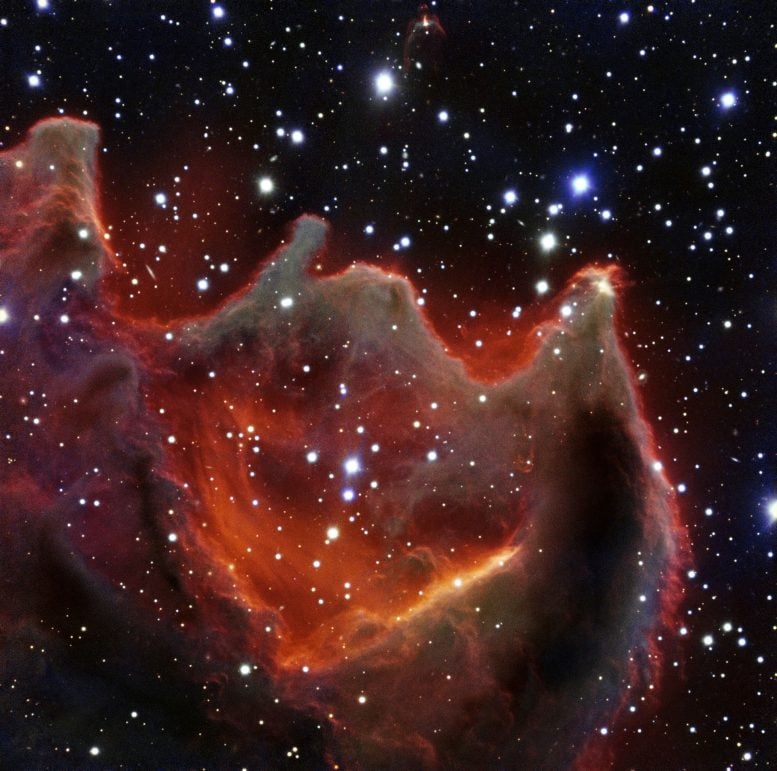
Like the gaping mouth of a gigantic celestial creature, the cometary globule CG4 glows menacingly in this image from ESO’s Very Large Telescope. Although it looks huge and bright in this image it is actually a faint nebula and not easy to observe. The exact nature of CG4 remains a mystery. Credit: ESO
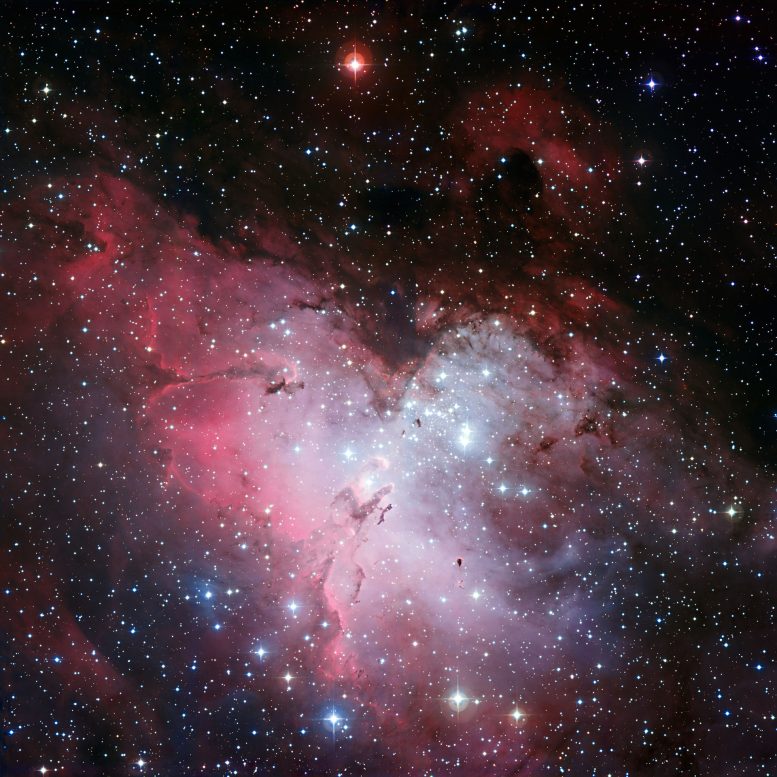
Three-color composite mosaic image of the Eagle Nebula (Messier 16, or NGC 6611), based on images obtained with the Wide-Field Imager camera on the MPG/ESO 2.2-meter telescope at the La Silla Observatory. At the center, the so-called “Pillars of Creation” can be seen. This wide-field image shows not only the central pillars, but also several others in the same star-forming region, as well as a huge number of stars in front of, in, or behind the Eagle Nebula. The cluster of bright stars to the upper right is NGC 6611, home to the massive and hot stars that illuminate the pillars. The “Spire” — another large pillar — is in the middle left of the image. This image is a composite of 3 filters in the visible range: B (blue), V (green), and R (red). Credit: ESO
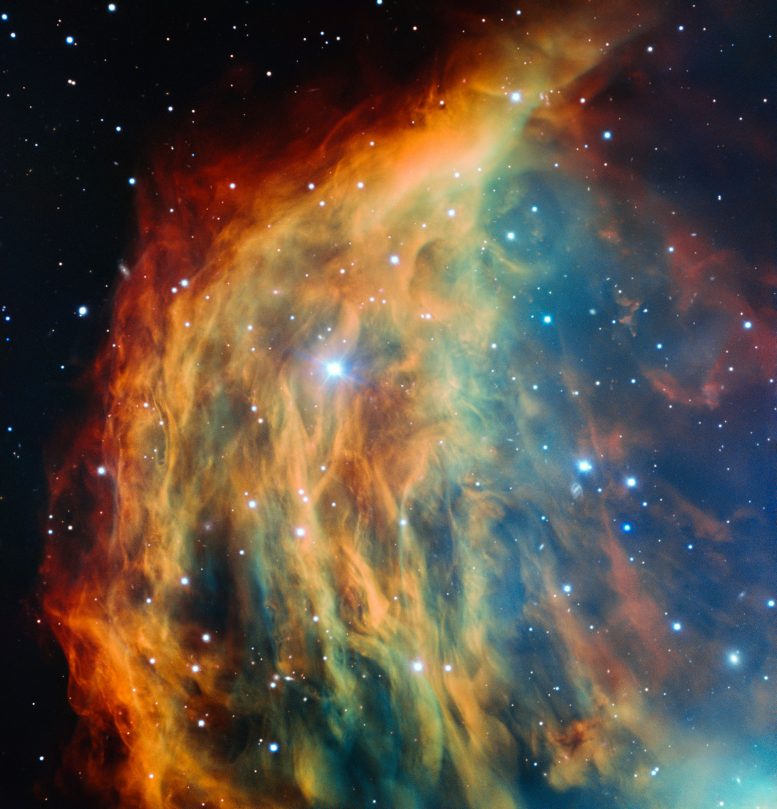
ESO’s Very Large Telescope in Chile has captured the most detailed image ever taken of the Medusa Nebula (also known Abell 21 and Sharpless 2-274). As the star at the heart of this nebula made its final transition into retirement, it shed its outer layers into space, forming this colorful cloud. The image foreshadows the final fate of the Sun, which will eventually also become an object of this kind. Credit: ESO
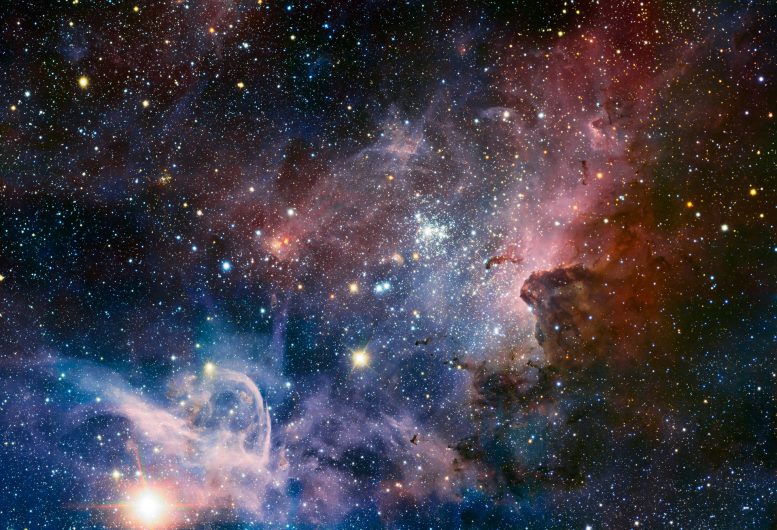
This broad image of the Carina Nebula, a region of massive star formation in the southern skies, was taken in infrared light using the HAWK-I camera on ESO’s Very Large Telescope. Many previously hidden features, scattered across a spectacular celestial landscape of gas, dust, and young stars, have emerged. Credit: ESO/T. Preibisch
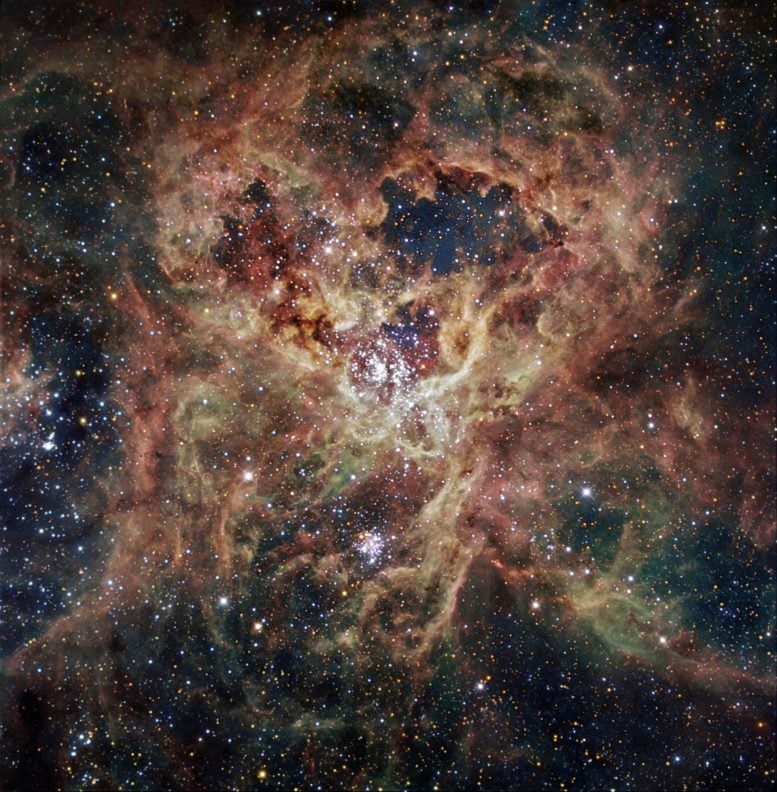
Located inside the Large Magellanic Cloud (LMC) – one of our closest galaxies – in what some describe as a frightening sight, the Tarantula nebula is worth looking at in detail. Also known as 30 Doradus or NGC 2070, the nebula owes its name to the arrangement of its bright patches that somewhat resemble the legs of a tarantula. Taking the name of one of the biggest spiders on Earth is very fitting in view of the gigantic proportions of this celestial nebula — it measures nearly 1,000 light years across! Its proximity, the favorable inclination of the LMC, and the absence of intervening dust make this nebula one of the best laboratories to better understand the formation of massive stars. This spectacular nebula is energized by an exceptionally high concentration of massive stars, often referred to as super star clusters. This image is based on data acquired with the 1.5 m Danish telescope at the ESO La Silla Observatory in Chile, through three filters (B: 80 s, V: 60 s, R: 50 s). Credit: ESO/IDA/Danish 1.5 m/R. Gendler, C. C. Thöne, C. Féron, and J.-E. Ovaldsen
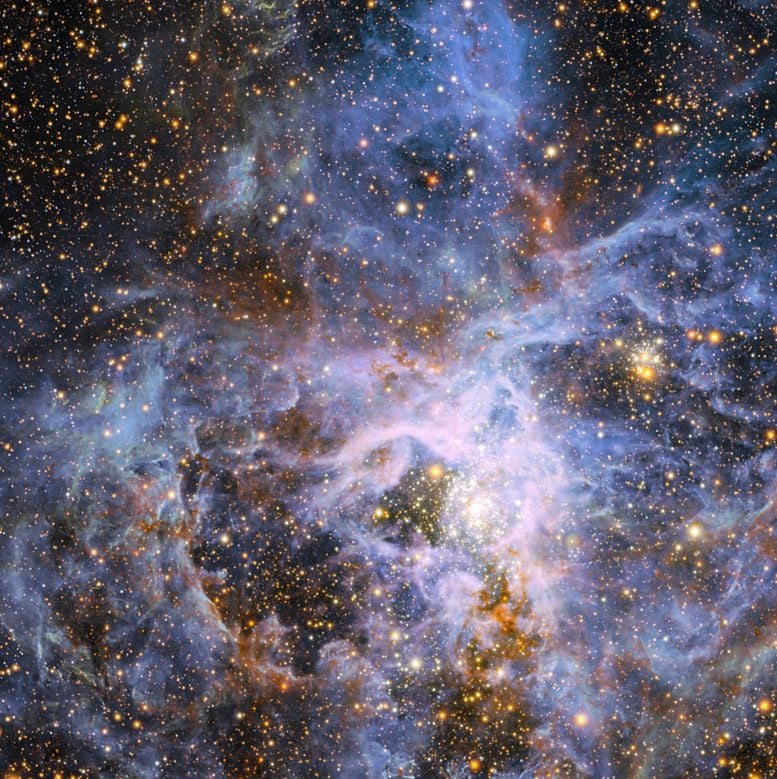
This view shows part of the very active star-forming region around the Tarantula Nebula in the Large Magellanic Cloud, a small neighbor of the Milky Way. At the exact center lies the brilliant but isolated star VFTS 682 and to its lower right the very rich star cluster R 136. The origins of VFTS 682 are unclear — was it ejected from R 136 or did it form on its own? The star appears yellow-red in this view, which includes both visible-light and infrared images from the Wide Field Imager at the 2.2-meter MPG/ESO telescope at La Silla and the 4.1-meter infrared VISTA telescope at Paranal, because of the effects of dust. Credit: ESO/M.-R. Cioni/VISTA Magellanic Cloud survey. Acknowledgment: Cambridge Astronomical Survey Unit
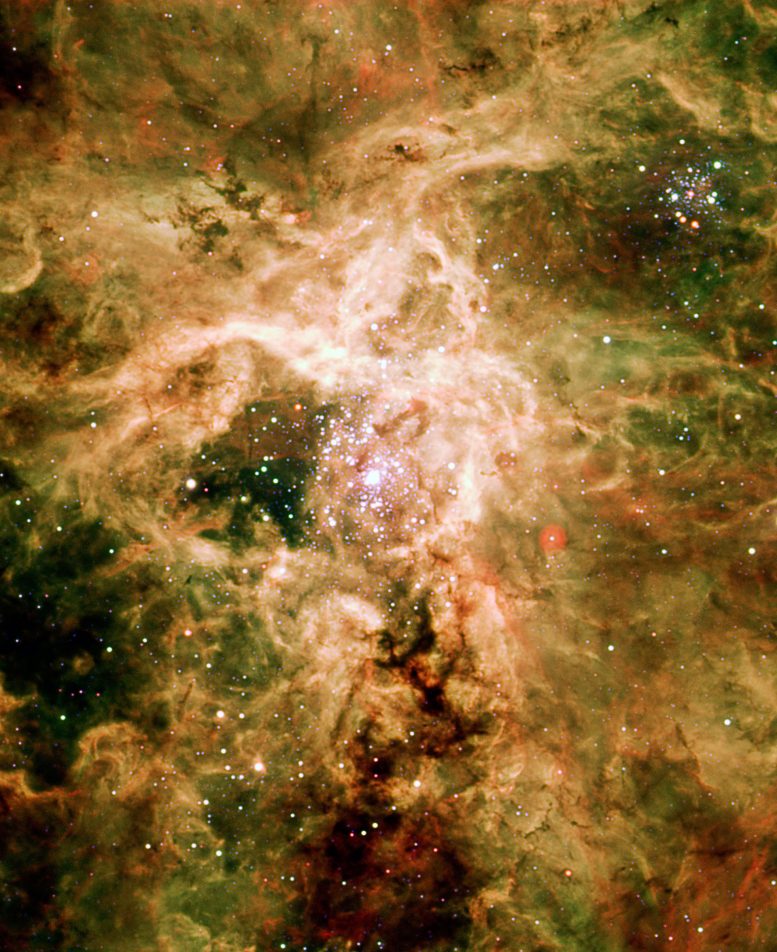
Located in the direction of the constellation Dorado in the Large Magellanic Cloud, the resplendent object known as NGC 2060 is the aftermath of a supernova. These powerful explosions serve as the death knell for massive stars, blasting heated matter out into surrounding space at great speed. Credit: ESO
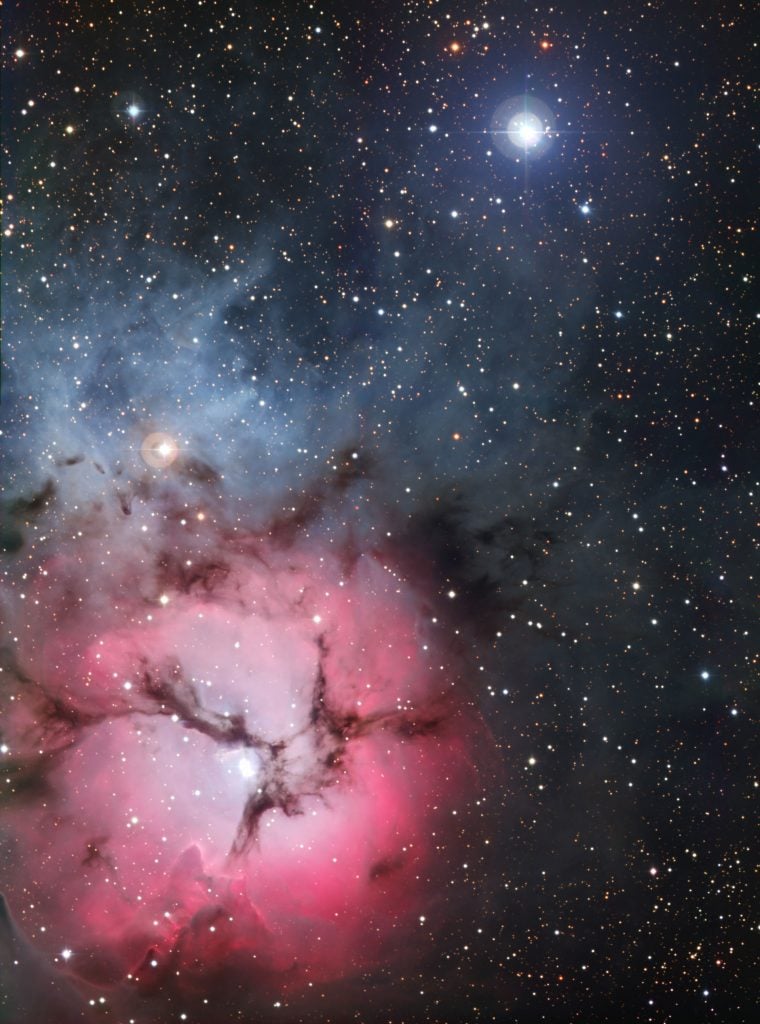
The massive star factory known as the Trifid Nebula was captured in all its glory with the Wide-Field Imager camera attached to the MPG/ESO 2.2-meter telescope at ESO’s La Silla Observatory in northern Chile. So named for the dark dust bands that trisect its glowing heart, the Trifid Nebula is a rare combination of three nebulae types that reveal the fury of freshly formed stars and point to more star birth in the future. The field of view of the image is approximately 19 x 26 arcminutes. The Trifid Nebula is also known as NGC 6514 and Messier 20. Credit: ESO
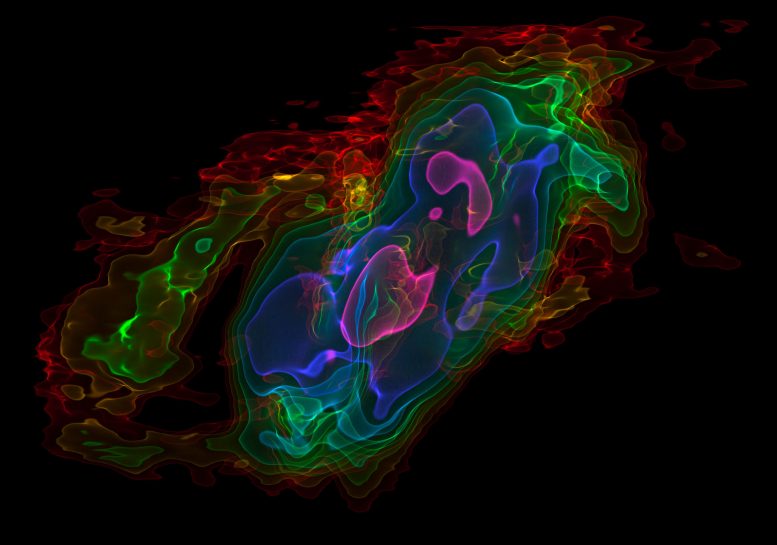
This picture shows a view of a three-dimensional visualization of ALMA observations of cold carbon monoxide gas in the nearby starburst galaxy NGC 253 (The Sculptor Galaxy). The vertical axis shows velocity and the horizontal axis the position across the central part of the galaxy. The colors represent the intensity of the emission detected by ALMA, with pink being the strongest and red the weakest.
These data have been used to show that huge amounts of cool gas are being ejected from the central parts of this galaxy. This will make it more difficult for the next generation of stars to form. Credit: ALMA (ESO/NAOJ/NRAO)/Erik Rosolowsky
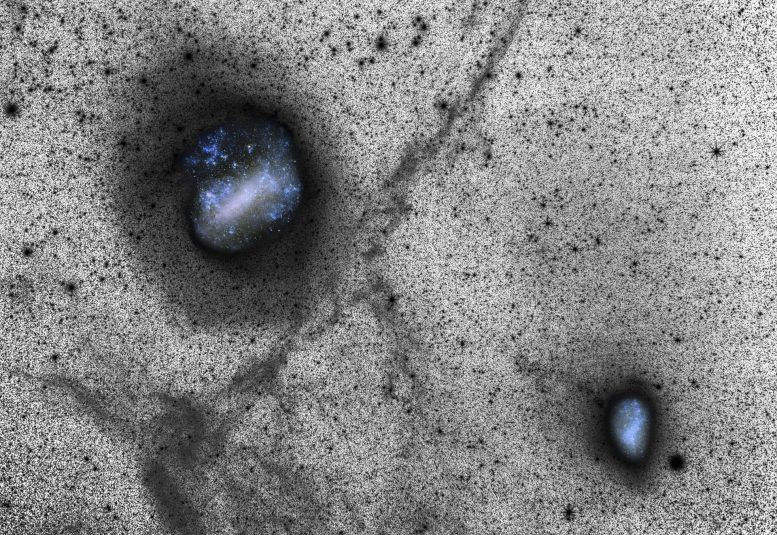
Each of the thousands of spots in this new image represents a distant star, and the glittering blue holes reveal glimpses of our neighboring galaxies, the Large and Small Magellanic Clouds. Although this image looks as if it was made on a large-scale telescope it was in fact captured from ESO’s La Silla Observatory using a portable setup consisting of an SBIG STL-11000M CCD camera and a Canon prime lens. It was presented in a scientific paper alongside state-of-the-art simulations, in an exciting example of how a small camera, a fast lens, a long exposure time, and one of the world’s best astronomical sites can reveal huge faint features better than even a big telescope.
This deep image was captured using the LRGB method, and provides an insight into the actual process of creating spectacular astrophotography. Many challenges face those attempting to photograph the night sky, including interference from light sources other than the object being photographed, and capturing objects in sufficient depth.
Trying to maximize the signal received from the target, whilst minimizing input from other sources — known as noise — is a crucial aspect of astrophotography. The optimization of the signal-to-noise ratio is far more easily achieved in black-and-white than in color. Therefore a clever trick often employed to capture a high-quality image is the use of a luminance exposure, which produces richly detailed monochrome images like the one seen here. Color details from images taken through color filters can then be overlaid or inset, as the Magellanic Clouds have been here. Credit: Y. Beletsky (LCO), D. Martinez-Delgado/ESO
More images from the European Southern Observatory.

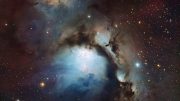
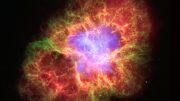
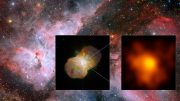
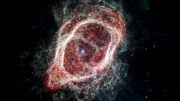
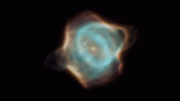
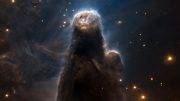
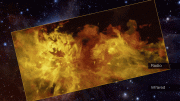

Be the first to comment on "Ten Must-See Images from the European Southern Observatory"